Super Bowl LV Advertisers - Who’s In, Who’s Out and What’s Different in 2021?


Viewers of Super Bowl LV on February 7 in Tampa will notice many changes to this year’s event, in keeping with the “new normal” of pandemic life. Fans (including 7,500 vaccinated healthcare professionals) will fill only one-third of the seats at Tampa's Raymond James Stadium in compliance with social distancing restrictions. Amanda Gorman, the National Youth Poet Laureate who made international headlines during President Biden’s inauguration, will read her new poem celebrating frontline workers, making her likely the first poet in Super Bowl performance history. Finally, while several brands will be making their Big Game advertising debuts, many of the biggest names traditionally associated with Super Bowl commercials will sit out this year.
Here’s a look at some of the companies choosing to make a statement by advertising - or not advertising - during Super Bowl LV on Sunday.
New faces at Super Bowl LV include Chipotle and Hellmann’s
Many Americans are eating more – if not most - meals at home as COVID restrictions continue. Several of this year’s first-time Super Bowl advertisers reflect this shift.
Fast-casual restaurant chain Chipotle will make its big game debut with a second-quarter commercial entitled “Can a Burrito Change the World?”. The ad follows a little boy as he imagines how a single meal – in this case a Chipotle burrito – could make farming and more sustainable, including, “how we plant things, water things, grow things, pick things, move things.”
The ad reflects Chipotle’s focus on “The Next Generation of Farming.” Along with the commercial, Chipotle has promised $5 million over the next five years to help young farmers and ranchers keep their businesses sustainable – both in environmental impact and in profitability. On Super Bowl Sunday, Chipotle will donate $1 from each delivery order to the National Young Farmers Coalition.
As Americans ate more at home over the past 12 months, they also threw away more food. Mayonnaise brand Hellmann’s (branded as Best Foods on the West Coast) is addressing the growing food waste crisis in its first-ever Super Bowl commercial. The spot, which stars Amy Schumer, encourages viewers to use Hellmann’s mayonnaise to get creative with their fridge and pantry contents, and “make taste, not waste.”
In addition to raising awareness through the Super Bowl ad, Hellmann’s is donating $100,000 to ReFED, a nonprofit committed to reducing food waste in the United States. Hellmann’s also will be partnering with Harvard Law School's Food Law and Policy Clinic to “push for clearer food labeling standards” and prevent food waste caused by unclear date labels on food.
Returning players: Anheuser-Busch brands
Since 1975, Anheuser-Busch has held the exclusive beer-advertising rights during the Super Bowl. This year, the company will air four minutes of ads over the course of the game. While as of press time, Anheuser-Busch had yet to release exactly how this airtime would be split up, the company had confirmed they will be highlighting six brands: Bud Light, Bud Light Seltzer Lemonade, Michelob Ultra, Michelob Ultra Organic Seltzer, Stella Artois and Cutwater Spirits. There will also be a standalone Anheuser-Busch corporate spot.
One exciting new development for Super Bowl LV: all of Anheuser-Busch’s Super Bowl television spots have earned gold-level Green Seals for Sustainable Production by the Environmental Media Association (EMA), a nonprofit group focused on linking leaders in the fields of entertainment, entrepreneurship and environmental progress.
The EMA Green Seal is an “established set of guidelines for sustainable production of TV, movies and events.” Every employee and vendor involved in the production of each commercial – from makeup to catering to filming to transportation – was required to meet the EMA’s sustainability standards. Anheuser-Busch is the first major advertiser to partner with the EMA and plans to continue these new sustainable best practices across all future marketing and advertising productions.
A legend takes a different approach: Budweiser
It is going to seem strange (for this New England-based writer, at least) to see Tom Brady wearing a non-Patriots uniform in this year’s Super Bowl. But another Super Bowl staple will also look different this time – Budweiser.
Unlike the six Anheuser-Busch brands mentioned earlier, Budweiser will not air a commercial during this year’s game.
Instead, according to the official press release, the brand will take the money traditionally spent on airtime and “reallocate that investment to support the Ad Council and public awareness and education throughout the year for the COVID-19 vaccination effort.”
There is still a new Budweiser commercial; however, it is running online only. The advertisement, entitled “Bigger Picture” and narrated by Rashida Jones, reflects on America’s heroes in the fight against coronavirus.
Maybe next year: Pepsi, Coca-Cola, Hyundai, Avocados from Mexico
Budweiser isn’t the only brand saving on ad buys this Sunday. Coca-Cola and Pepsi also will be absent from the Super Bowl LV advertising lineup. Pepsi will still be the title sponsor of the halftime show starring The Weeknd, though, and parent company PepsiCo will be airing ads for some of its other brands. Other big names opting out of this year’s Super Bowl include Hyundai and Avocados from Mexico.
It remains to be seen whether or not advertisers’ decision to “sit out” Super Bowl LV is a one-off response to the strange times we are currently living in, or the start of a trend away from TV advertising and toward alternate promotions.
Image credit: Ryan Haft/Unsplash
Sober Mood at Davos as Business Leaders Ill-Prepared to Pivot and Adapt in A Post-COVID World

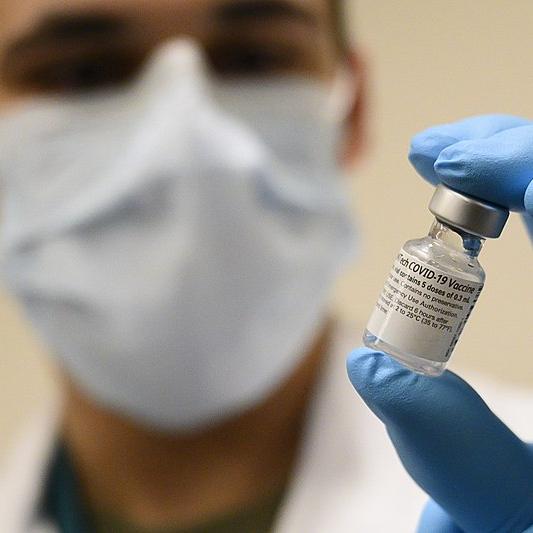
Over the course of five days, world business and political leaders during the World Economic Forum’s Davos Agenda engaged in a deep - and virtual - dive into an economy in crisis, soaring unemployment and debt levels, growing income inequality and climate change.
Given that daunting set of problems, was the prevailing mood one of resolve or despair? Judging from Deloitte’s annual resilience report, it could be the latter—or at least a whole lot of worry.
Worry takes center stage at Davos
In a survey of 2,260 private- and public-sector leaders in 21 countries, Deloitte found that most global business leaders still do not feel confident leading through disruption, and even more believe their organizations are ill-prepared to pivot and adapt.
More than six in 10 organizations expect to see either occasional or regularly occurring disruptions of the current scale going forward, and climate change is seen as the top threat in this regard, Deloitte found. Yet more than two-thirds of the leaders who Deloitte surveyed don’t have complete confidence in their organizations’ ability to pivot and adapt to disruptive events.
The executives’ view of the top societal challenges facing their companies captures the essence of a disruptive 2020: After climate change, they named health care issues and prevention; gaps in education, skills, training; income inequality and distribution of wealth, and systemic bias and inequality as the top five concerns.
Not panicking and keeping the long view seems to be the key. Deloitte’s survey found that more than 85 percent of leaders whose organizations have successfully balanced addressing short- and long-term priorities felt they had pivoted very effectively to adapt to the events of 2020, whereas fewer than half of organizations without that balance felt their organizations adapted well.
Questions over measuring the shift to stakeholder capitalism
The Davos Agenda marked the launch of WEF’s “The Great Reset” initiative, which is all about the long term, according to Professor Klaus Schwab, WEF’s founder and Executive Chairman, who said: “The pandemic represents a rare but narrow opportunity to reflect, reimagine and reset our world.”
Schwab launched his latest book, Stakeholder Capitalism, during this week’s event. The book calls for a more inclusive, sustainable and resilient global economy post-COVID in the face of challenges like rising income equality and short-sighted exploitation of natural resources. That means, he writes, finding “measures of success that allow us to move beyond a myopic focus on GDP and short-term profits.”
Whether that shift from short-term profits is taking hold in a broad way is still to be determined, but WEF has developed a set of Stakeholder Capitalism Metrics to help companies measure not just on profit but on “Principles of Governance, Planet, People and Prosperity.”
That might elicit a groan from the sustainability practitioners already lost in a sea of voluntary standards. The good news is, the five leading voluntary framework and standard-setters - CDP, the Climate Disclosure Standards Board, the Global Reporting Initiative, the International Integrated Reporting Council, and the Sustainability Accounting Standards Board - have said they are all behind the effort to work towards a single, coherent, global ESG reporting system and have contributed to the Stakeholder Capitalism Metrics.
Agreement on how to measure progress will be welcome in a world where business leaders have to contend with a lot more than how to keep their companies financially afloat. The Davos Agenda summed up those challenges in its seven themes, which range from environmental sustainability worldwide to building a more inclusive, sustainable job market for all citizens.
Poverty and inequality pose systemic challenges
Bill Gates took to the virtual stage to underscore that after falling for two decades, extreme poverty has risen by 7 percent during 2020, wiping out advances on ending hunger and poverty by 2030. That widening socio-economic gap along with deeper racial and gender inequalities was the focus of another sobering assessment on the state of global equality that Oxfam delivered during the Davos Agenda.
Among the recommendations that WEF advocated during the Davos Agenda to tackle surging poverty included a “people’s vaccine,” allowing for everyone to get inoculated in the coming months, not only the wealthy; taxing extreme wealth to invest in a more sustainable and just future for all; and expand access to healthcare and social welfare programs to prevent more people from falling into poverty.
“You cannot negotiate with physics” - Greta Thunberg delivers her message
The presence of so many world leaders didn’t impress everyone. All that talking is so much hot air, long among the criticisms that have come from youth climate and social justice activists. And what would Davos be without an appearance by Swedish climate activist Greta Thunberg, who shook up the staid gathering with her unflinching assessment in her remarks in 2019 when she said “our house is on fire,” and again in 2020.
This year, once again, in a video message on YouTube, she once again made clear her disappointment in the leaders at Davos for what she sees as “lame” commitments and lack of progress on climate change.
“Targets like net zero emissions 2050. Targets that equal surrender…We understand that the world is complex and that change doesn’t happen overnight. But you’ve now had more than three decades of blah, blah, blah. How many more do you need? Because when it comes to facing the climate emergency, the world is still in a state of complete denial…But I assure you this. You cannot negotiate with physics,” Thunberg said.
Image credit: U.S. Department of Defense/Wiki Commons
The Inequality Virus Rages Alongside the Pandemic, and Demands Business Takes Notice
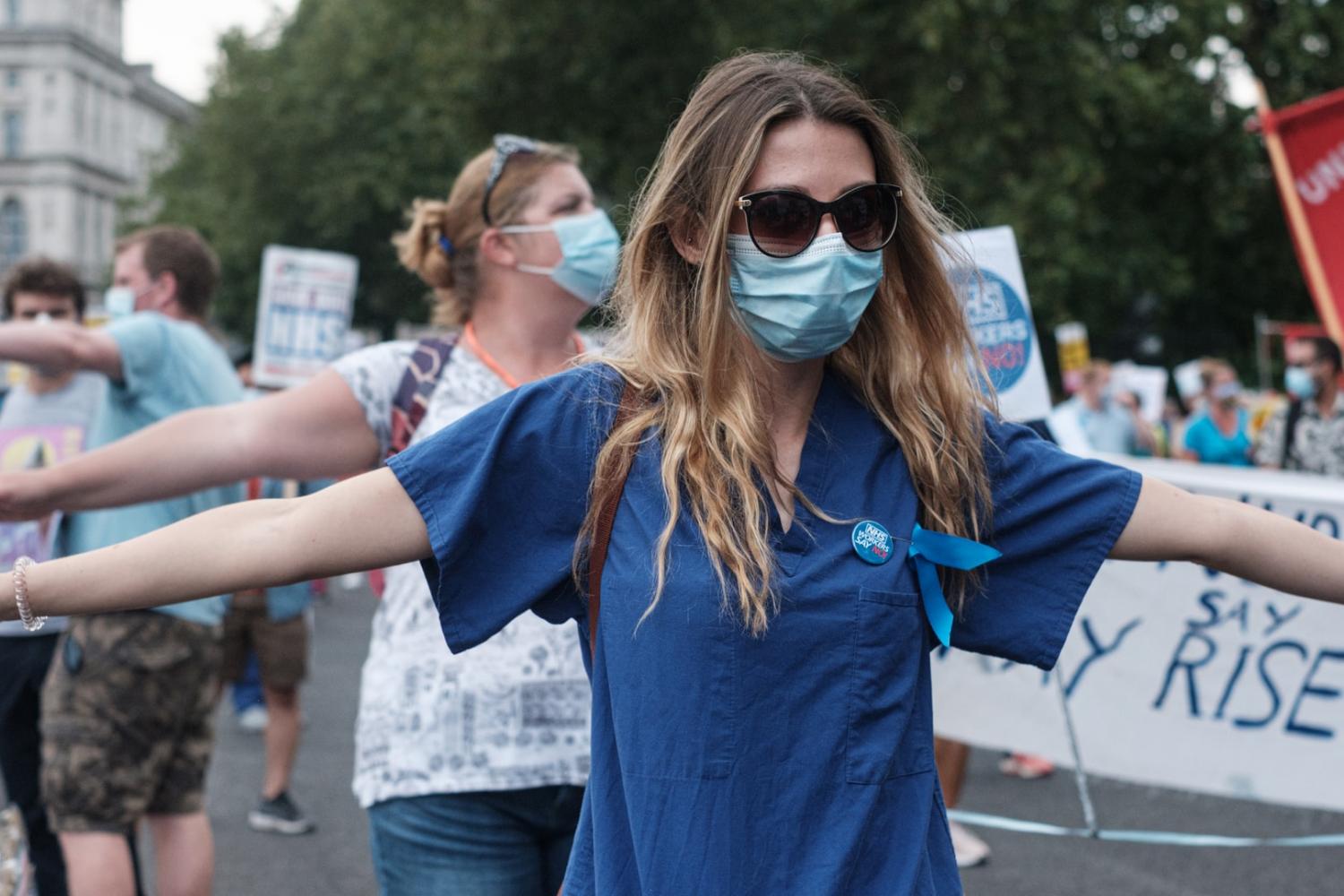
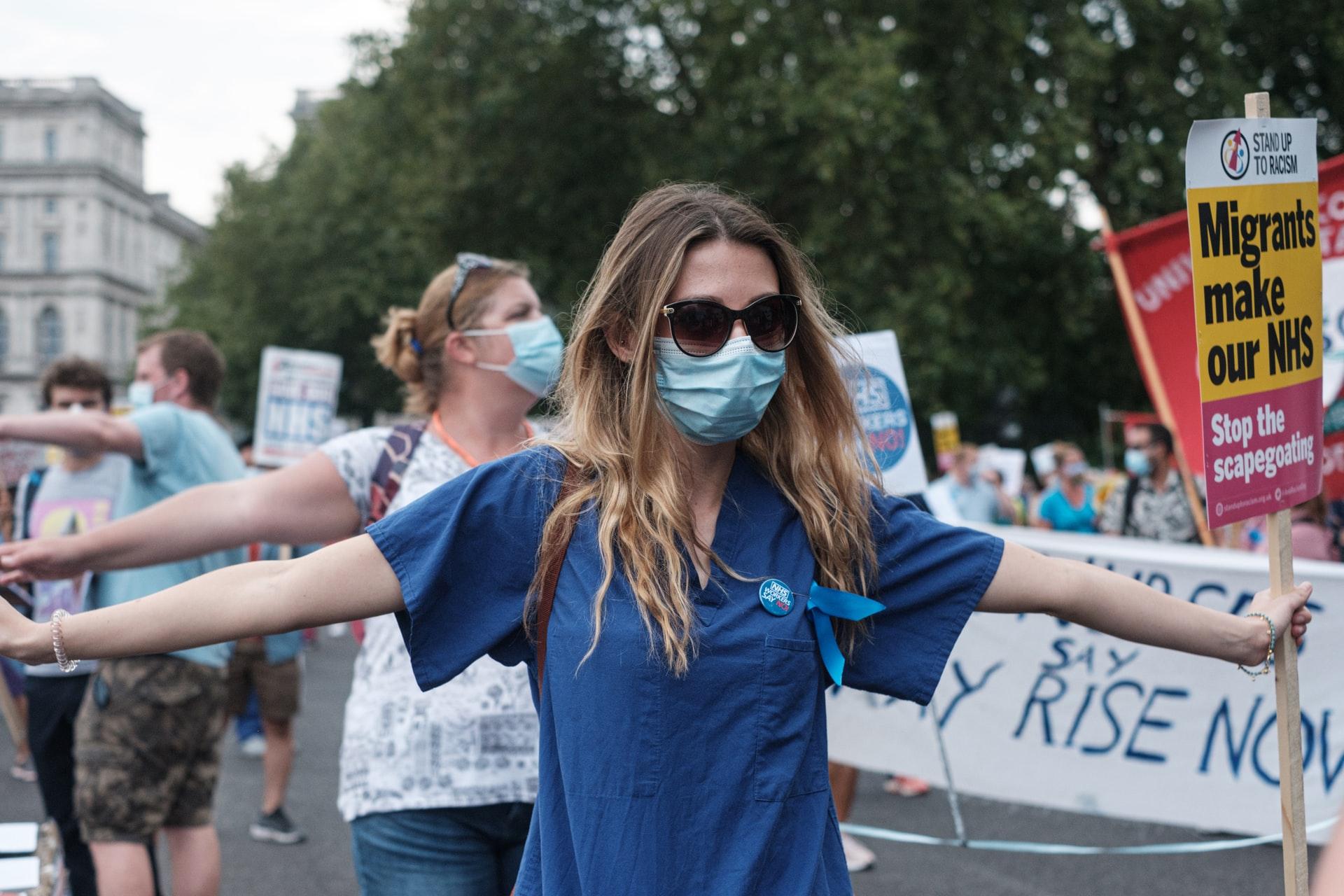
Amid the raging novel coronavirus pandemic, another global threat has become more virulent, and in a recent report, Oxfam gave it a name: The Inequality Virus. Extreme economic and racial inequality has grown exponentially worse since the emergence of COVID-19, the global charitable organization says, and business, along with government and the rest of society, face “a small but shrinking window of opportunity to create a just economy after COVID-19.”
Published on the opening day of the World Economic Forum’s (WEF) virtual Davos Agenda, the report laid out the yawning gap between wealthy and poor in stark terms. The 1,000 richest people on the planet recouped their COVID-19 losses within just nine months, Oxfam said, but it could take more than a decade to for the world’s poorest to recover from the economic impacts of the pandemic.
COVID-19 has the potential to increase economic inequality in almost every country at once, the first time this has happened since records began over a century ago, the report showed. “Rising inequality means it could take at least 14 times longer for the number of people living in poverty to return to pre-pandemic levels than it took for the fortunes of the top 1,000, mostly White male, billionaires to bounce back,” according to Oxfam.
Nearly 300 economists expect inequality to grow worse
The organization was not alone in its sober assessment. A global survey of 295 economists from 79 countries, commissioned by Oxfam, reveals that 87 percent of respondents, including Jeffrey Sachs, Jayati Ghosh and Gabriel Zucman, expect an “increase” or a “major increase” in income inequality in their country as a result of the pandemic.
While history will remember this pandemic for taking over two million lives worldwide to date, it will also be a marker of hundreds of millions of people being pushed into poverty, with an estimated doubling of food insecurity, as TriplePundit has reported.
Recession is over for the world’s richest, while millions struggle
In Oxfam’s assessment, the recession is over for the richest. It points out that the world’s ten richest men have seen their combined wealth increase by half a trillion dollars since the pandemic began, which, as they point out, is more than enough to pay for a COVID-19 vaccine for everyone and ensure no one is pushed into poverty by the pandemic.
But in reality, the pandemic has led to the worst job crisis in over 90 years, with hundreds of millions of people now underemployed or out of work. Women are hardest hit, as they make up roughly 70 percent of the global health and social care workforce - essential jobs but often poorly paid that put them at greater risk from COVID-19. Women accounted for 100 percent of the 140,000 jobs lost in December in the U.S., the National Women’s Law Center reported.
The inequality falls across racial lines as well, according to Oxfam’s report. Afro-descendants in Brazil are 40 percent more likely to die of COVID-19 than White people, while nearly 22,000 Black and Hispanic people in the U.S. would still be alive if they experienced the same COVID-19 mortality rates as their White counterparts. Infection and mortality rates are higher in poorer areas of countries such as France, India, and Spain while England’s poorest regions experience mortality rates double that of the richest areas.
GDP makes a poor metric for equality, says Oxfam
“Fairer Economies” is one of the seven key themes at Davos 2021, and WEF has said addressing inequality is key to a rapid economic recovery from COVID-19.
In a press conference announcing the release of the report, Oxfam Executive Director Gabriella Boucher called on governments and business to “measure what matters” if they are serious about creating a world that is profoundly more equal. And that leading metric should not be the prevailing Gross Domestic Product (GDP), she added.
“GDP is an obsession in economic growth,” she said. “What does it mean really? One country may be growing at the same rate as another but if it is much more unequal, all that growth is going into the hands of a very few people. In another country, if the wealth is very distributed, actually more people are benefitting.”
She pleaded with leaders to focus on metrics for well-being and sustainability, meaning that “to measure things that we really want to impact, and then introduce policies that help us achieve those goals.”
Pandemic shows that business needs to step up
This could begin with the coronavirus marking a turning point in the taxation of the richest individuals and big corporations, Oxfam suggests in its report, noting that a temporary tax on excess profits made by the 32 global corporations that have gained the most during the pandemic could have raised $104 billion in 2020. This, it added, is enough to provide unemployment benefits for all workers and financial support for all children and elderly people in low- and middle-income countries.
At the press conference for the report launch, Rebecca Marmot, Chief Sustainability Officer for Unilever, acknowledged that “There are key structural and systemic inequalities in the world that have sadly been further accentuated by COVID. The role of the private sector is really clear.
We need to reshape society and economy so there is a new model that brings longer term prosperity for everybody, a new normal. Unilever looks at how companies can address inequity right across their full value chain in a collaborative way.”
The Great Reset is the theme of Davos this year and the business community seems to waking up to the reality that returning to the status quo after the pandemic and ignoring endemic challenges like racial inequality could expose some companies as laggards.
Unilever makes set of bold commitments
Unilever is among the members of the Partnering for Racial Justice in Business initiative announced at Davos this week, a global coalition of organizations and their C-suite leaders who say they are committed to leveraging their individual and collective power to build equitable and just workplaces for professionals with under-represented racial and ethnic identities.
Last week Unilever committed to a range of actions with the aim to build a more inclusive and equitable society. It pledged that everyone who directly provided goods and services to the company would earn at least a living wage or income by 2030; that it would spend 2 billion euros annually with suppliers owned and managed by people from under-represented groups by 2025, and it would equip 10 million young people with essential skills to prepare them for job opportunities by 2030.
It remains to be seen if more companies take Unilever’s lead and back a vague pledge to address inequality with concrete measures. But if they don’t, NGOs like Oxfam won’t hesitate to call them out on it.
Image credit: Ehimetalor Akhere Unuabona/Unsplash
Hail the Era of Activist CEOs - When Purpose and Platform Converge

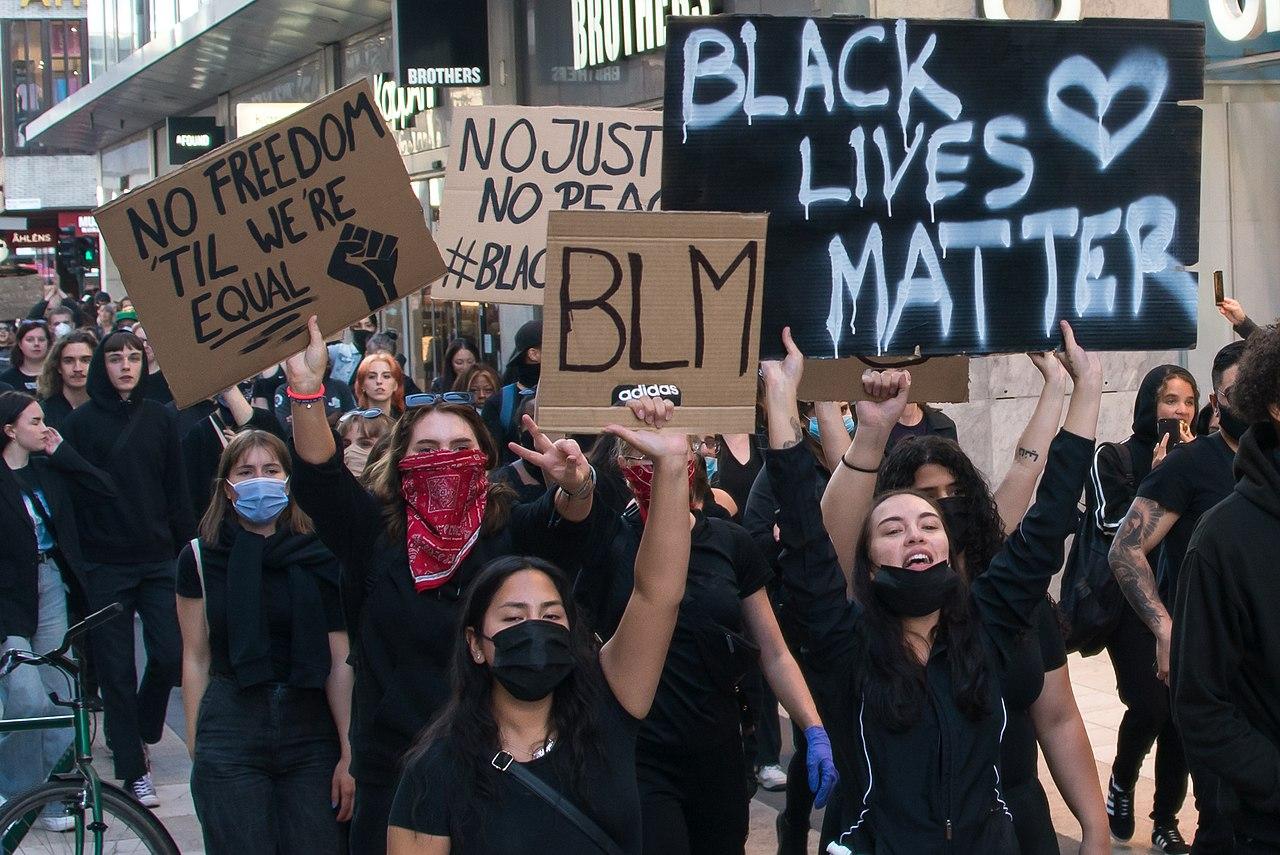
This article on the role of activist CEOs was co-written by Elaine Weidman Grunewald.
In the past year we’ve seen inspirational examples of business leaders and activist CEOs who are guiding the world through some tough times. They have taken a stand, from their handling of the novel coronavirus pandemic to taking action against racial inequality amid the Black Lives Matter protests to the influential Business Roundtable raising its voice in defense of the U.S. Constitution in the wake of recent violent protests and attacks against the U.S. Capitol.
Leveraging your personal influencing platform is one of those “X-factors” that determine whether a business leader will have exponential impact in driving sustainability leadership, as we describe in our book, Sustainability Leadership: A Swedish Approach to Transforming Your Company, Your Industry and the World.
We wrote this book because of our own commitment to encourage business leaders to step up to the unprecedented and urgent challenges we face. Inaction or incremental responses are no longer enough. And because our own experience in leading Swedish companies and otherwise has shown us that Sweden, while not perfect, abounds with leading examples of companies working profitably and meaningfully to move the needle on sustainability.
In Sweden, consensus and cooperation rule
In Sweden, there is a special kind of synchronicity between business leaders and society: the idea that every sector is invested in creating a fair and equitable society that is socially inclusive and environmentally responsible. As Robert Strand, the Executive Director of the Center for Responsible Business and Lecturer at the Berkeley Haas School of Business shared with us, the idea of cooperative advantage is enshrined in the Scandinavian culture.
Editor’s note: Be sure to subscribe to our weekly Brands Taking Stands newsletter.
Successful leaders, including this emerging group of activist CEOs, can use their platform to shine a spotlight on important sustainability issues, and when times are tough or challenges too great to solve alone, they form cross-sector alliances with unconventional partners to get tough things done. They know their facts, match their positions with meaningful and consistent action, and engage fairly, transparently and constructively to influence the conversation with the end goal of achieving sustainability goals. They dare to demand bold action, take risks and stand for something they believe in, despite the potential backlash.
Authenticity makes the platforms of activist CEOs credible
We believe more business leaders can, and should, use the platform of their company, industry, or a personal conviction to amplify their voice. Some 69 of the 100 richest entities in the world are companies - with that power comes responsibility. We’ve seen the emergence of more activist CEOs as today’s pioneering business leaders step up and speak out. If done credibly and authentically, leaders can add significant momentum to the search for solutions to the increasingly complex issues affecting business and society. This is becoming a fundamental aspect of leadership: Using your own personal influencing platform to make your organization’s purpose genuine and impactful.
An authentic influencing platform first and foremost is about being true to one’s own words, always connecting back to purpose and values. That is as true for building credibility within your own organization as it is for reaching out beyond the limits of your company or industry to achieve positive impact at scale. Often this involves finding the right partners and alliances and forming a united front on the issues that you are most willing to fight for. And far from this being an altruistic, charitable act, expanding your sustainability leadership platform should create even stronger competitive advantage.
Even without external stakeholder pressure, these activist CEOs are seizing the moral imperative to act and make their voices heard, including on controversial topics that could potentially invite customer backlash. Many leaders find that taking a stand is surprisingly positive for building a brand with purpose. Still others meet criticism when their stand is found to be inconsistent or inauthentic.
Bring others on board
Every leader’s voice matters in creating a new corporate narrative on sustainability. To make their platforms exponential, companies can work within and across sectors and leverage public-private partnerships. Working cross-sector, as opposed to working within a sector, can bring new diversity and shed new light on problems which can in turn deliver new opportunities for catalyzing change. Further, public-private partnerships are key to tackle bigger issues that no single party would have the incentive or capacity to solve on its own.
Inaction really isn’t a choice for a leader who wants to leave a meaningful legacy. There is no shortage of problems demanding urgent solutions and business as usual can no longer apply to e.g., climate change, which clearly requires urgent action.
The new U.S. presidential administration is an opening for business leadership
While 2020 was a tumultuous year, there are signs that new leadership is shifting in a more positive direction. In the new administration of U.S. President Joseph Biden, business leaders are expected to have new opportunities to lead on environmental action and other ESG (environmental, social and governance) issues. As one of his first acts in the Oval Office, Biden signed an executive order to have the United States rejoin the Paris climate agreement and has signaled his desire that the U.S. should once again be a leader with respect to climate change.
This show of commitment from the top levels of government is an opening for business leaders as well. The support of the private sector will be critical to solving global challenges like climate change, as no government can do it alone. Every leader has an opportunity now to find the cause and platform that is most relevant and matters most to them, and which allows for the most exponential impact. We urge leaders to find their burning platform and make it the beating heart of their business.
Elaine Weidman Grunewald, co-author of this article, is a global sustainability executive. She spent 20 years at Ericsson, where she was Chief Sustainability Officer. Grunewald is also a co-founder of the AI Sustainability Center, a world-leading center focused on the ethical and societal implications of AI and data-driven technologies. Connect with her on LinkedIn or Twitter.
Image credit of Black Lives Matter protest in Stockholm: Frankie Fouganthin/Wiki Commons
Is One Set of ESG Standards Coming Soon?


The announcement at this week’s World Economic Forum (WEF) that sixty-one global companies, which together generate revenue totaling $4.3 trillion and employ 7 million people, have agreed to implement WEF’s common environmental, social and governance (ESG) metrics for stakeholder capitalism is further proof that the aspiration for a single set of ESG standards for business reporting is moving fast.
The confusion, lack of consistency and comparability in existing sustainability reporting has long been felt, with the oft-used phrase “alphabet soup” marking the debate amongst companies and investors alike.
It is important not just to describe these developments, but to understand why the speed is accelerating and to harness this for what happens next.
Investor-led momentum
Since describing this as a "race to the top" here on TriplePundit five months ago, the WEF announcement has come hard on the heels of an interim report by the body working on European Union ESG standards, the production of a prototype climate-related disclosure standard by the “Big 5” voluntary sustainability framework and standard-setters, and consultation by the International Financial Reporting Standards (IFRS) Foundation on whether it should address sustainability reporting in its own standard-setting.
Probably the biggest push to this momentum arises from the rising voice of investors that ESG issues are increasingly relevant to them, but that they can barely use corporate sustainability reporting as it is undertaken today.
When I was CEO at the International Integrated Reporting Council, we received an independent report from McKinsey, which showed 75 percent of institutional investors wanted a single sustainability standard, with 85 percent saying this is needed to be able to allocate capital more effectively.
BlackRock Chair and CEO Larry Fink, whose annual letter to company CEOs has become the hallmark of this movement, says in his 2021 letter also published this week: “We strongly support moving to a single global standard, which will enable investors to make more informed decisions about how to achieve durable long-term returns.”
These developments have certainly influenced the IFRS Foundation to consider stepping in, although its paper is careful to reference different stakeholders and to justify its proposals on combating fragmentation, cost and complexity in existing sustainability reporting.
The Foundation is currently analyzing more than 600 responses to its consultation, but it would be surprising if it does not proceed towards the formation of a new Sustainability Standards Board working alongside - and connected to - the International Accounting Standards Board for financial reporting.
The challenge may be in how long it takes to achieve this within its deeply entrenched governance processes.
Companies want to move faster
The second major factor lies in the frustration amongst companies themselves, suffering from reporting fatigue but also sharing the vision of many stakeholders that progress is too slow to enable societal and environmental challenges to be met in time.
The COVID-19 pandemic may have increased awareness of systemic risks and proven that ESG-ready companies have been more resilient at a time of crisis, but it has still seen a reversal in progress towards the Sustainable Development Goals (SDGs).
The sustainability context – the time and collective impact efforts that streamlined ESG standards will have in meeting Paris and SDG targets – remains all-too-often missing from the discussions.
Nevertheless, the WEF initiative encapsulates the push from companies to move faster, providing a core set of 21 core and 34 expanded ESG metrics, with speakers in the online Davos Agenda calling these “a standard” and predicting a further “huge increase” in take-up by the Forum’s next meeting in January 2022.
What has struck me from this week’s Davos debates and a new background paper published to coincide with the Davos Agenda announcement, “The Future of the Corporation,” is the strength of the ambition from business leaders to move beyond profit maximization to “stakeholder capitalism.” This also seems largely missing from the other actors in ESG standards and stands as a further challenge to them.
At the very least, as long as companies including HSBC, Mahindra Group, Royal Dutch Shell, Sony and Unilever implement their pledge in the 2020 and 2021 reporting cycle, we will have an early opportunity to assess whether the new reports are perceived differently by investors and other stakeholders.
European ESG standards – which definition of materiality?
The final report of the European Financial Reporting Advisory Group mandated to consider European ESG standards is due as soon as next month. It has already published proposed principles, operational guidelines and an architecture for new EU standards.
At an outreach meeting with eleven European-wide business, investment and accountancy organizations held earlier this month, there was strong support for the bloc’s definition of “double materiality” - both financial and ESG relevance for the reporting - with a majority of respondents saying companies’ social and environmental impact is the most important component in designing the reporting standards.
This stands in stark contrast to the focus on how ESG factors have an impact on “enterprise value creation” as the ultimate objective, which is at the heart of all of the other initiatives.
Many see this financial imperative as a driver rather than an inhibitor, but the exact definitions for materiality chosen by the European Union and by the IFRS Foundation will crucially determine the future path for ESG standards - and may well diverge.
Existing ESG reporting as a building block
If this all seems as confusing as ever, it is heartening to see the “Big 5” recognize their metrics are building blocks and communicating a willingness to contribute to the establishment of a new set of ESG standards, rather than simply defend their own organizational space.
“The EU as well as the IFRS are going through a process. All of us are interested in helping them to meet their ambition of creating a new reporting regime,” GRI Chair Eric Hespinheide told an online event to launch the new prototype. “We may not be in the room but are in discussion, and can leverage the intellectual capital we’ve created over twenty years, to help them to move quickly.”
EFRAG Project Task Force Chair Patrick de Cambourg showed his readiness for Europe to build on existing metrics and to interact with the global players but said the EU must design its own standards first, “to make international cooperation a two-way process.”
WEF Chair Klaus Schwab said: “We are working together with standard-setting agencies and governments not to create a competition, but to create a generally accepted common framework of metrics. It needs a key number of companies to report, but to then to integrate this in standard-setting.”
Watch these continuing fast-moving developments. But there really may be harmony in the harmonization.
Image credit: Benjamin Child/Unsplash
Despite the Global Pandemic, Clean Energy Just Had a Banner Year


The COVID-19 pandemic has roiled energy markets around the world, but it has not stopped the clean energy juggernaut. More than 130 global corporations bought a combined, record-setting total of 23.7 gigawatts in wind and solar last year. In a sign of things to come here in the U.S, Texas is becoming a hub of solar activity in addition to its status as a wind power leader.
Global corporations keep uniting around clean energy
Six years ago, top U.S. corporations organized a powerful public relations and lobbying effort in support of the 2015 Paris Agreement on climate change. They never let up, pushing for more investments in renewables all through the Trump administration. In addition, leading global oil and gas stakeholders, such as France-based Total among others, have been pivoting to renewables to meet the rising demand for clean energy.
According to a new report from BloombergNEF, last year’s corporate clean energy purchase of 23.7 gigawatts globally came within reach of doubling the amount of 13.6 gigawatts recorded in 2018. Despite the challenges of COVID-19, the total amount of such acquisitions increased by 18 percent in 2020, up from 20.1 gigawatts in 2019.
The 130 corporations tracked by BNEF represent a wide range of sectors, but all share one common trait.
“Underpinning the market is surging stakeholder interest in corporate sustainability and expanding access to clean energy globally,” BNEF explains.
How the U.S. almost dropped the clean energy ball
In an indication that former President Trump’s fossil-friendly policies may have had an impact in the U.S., corporate clean energy investments suffered their first year-on-year drop since 2016. The amount dropped to 11.9 gigawatts in 2020, down from 14.1 gigawatts in 2019.
Nevertheless, the U.S. remains the single largest clean energy market in the world. BNEF also attributes part of the falloff to the pandemic, indicating the clean energy buyers in the U.S. are primed to pick up where they left off.
Despite troubles at home, top U.S. corporations and brands continued to make an impact on growth within the global renewables market last year. Anheuser-Busch, which became part of Belgium-based AB InBev in 2008, is credited with helping to propel Spain’s booming clean energy market in 2020. Globally, the U.S. tech companies Amazon, Google, Facebook and Verizon claimed four of the top five spots for clean energy purchases last year.
Sunny skies (and steady winds) ahead for clean energy purchasers
Taiwan is another market that surged upwards last year despite the pandemic. BNEF attributes the sudden burst of activity in part to increased interest among the nation’s many manufacturers, which are feeling pressure from corporate customers that want to decarbonize their supply chains.
More likely, though, the bulk of the impetus was provided by a policy change. BNEF notes that Taiwan has imposed a new clean energy requirement on companies using 5 megawatts or more annually.
Similarly, BNEF expects a new energy policy in South Korea to spark a fresh burst of corporate activity in the clean power market there.
Here in the U.S., Republican members of Congress could slow or halt federal clean energy legislation. However, President Biden has already made climate action a top priority across all federal agencies. The purchasing power of the Department of Defense alone will help drive the market for decarbonization, including energy efficiency and clean fuels as well as wind and solar power.
All eyes on the Lone Star State
As one indication that the U.S. is positioned for another burst of clean energy activity in the months ahead, solar developers are beginning to test the waters in Texas.
Texas is already a wind power leader in the U.S., but it has been slow to exploit its rich solar resources. That could change with the advent of grid improvements that balance wind and solar inputs, in addition to growing demand from corporate energy purchasers.
In the latest development, earlier this week the EU-based solar company Lightsource BP announced the start of construction on a new 316 megawatt, $380 million solar project in Texas, consisting of two solar arrays to be located about 40 miles from Dallas.
Two firms, L3Harris and the Capital Solutions unit of Allianz Global Corporate & Specialty (AGCS), have already staked out their claims to clean energy generated from the new arrays.
Completion of the project is expected before the end of this year, and there is much more in store for the Lone Star State. Late last year the Chicago-based solar developer Invenergy announced that it will build the largest solar facility in the U.S., a 1.31 gigawatt hub that will support clean energy purchases from AT&T, McDonalds, Google, Home Depot and Honda along with several municipal buyers.
Texas’s role in the U.S. clean energy transition is especially significant, considering its dominant position in the oil and gas economy. Regardless of federal legislation, Texas is on track to help accelerate climate action in the U.S.
That’s not a moment too soon. According to the latest report from the International Energy Agency, global electricity demand only took a temporary nosedive during the 2020 COVID-19 lockdowns. The Biden administration’s shift on energy policy, including vehicle electrification, are all but certain to keep demand rising in the U.S. for many years to come.
Image credit: Laura Ockel/Unsplash
Water Utilities Need to Completely Reset Their Business Models


As the Joe Biden administration ramps up its climate plan and lays out strategies for lowering emissions in the electricity and transportation sectors, one sector in particular needs to be reconsidered: water. Water utilities will not only feel the full force of climate impacts, but are also a not-often-counted contributor to emissions. Technical solutions exist, but they are complicated by political considerations, lack of resources, competing interests and antiquated processes. All of these challenges are solvable with investments in both effort and money.
The current state of water utilities across the U.S.
Public water utilities serve the vast majority of Americans. Of the approximately 155,000 public water systems, about 8,700 of them serve close to 92 percent of the population, and those smaller systems typically face the worst resource constraints. About 12 percent of water utilities are private, both for- and non-profit. Unfortunately, water utilities’ infrastructure on the whole is in a sorry state: The American Society of Civil Engineers rates it as a “D”. Most of the foundation of today’s water utilities was installed in the early- to mid-20th century with a projected lifespan of 75 to 100 years – so, it’s been long past the time for replacements and upgrades.
One key problem that water utilities face is an antiquated business model, based on revenue from ratepayers. Most of these utilities’ costs are fixed, so they must look to customers to make up the shortfall, leading to a perverse incentive to not encourage conservation. But there’s an interesting problem that it is also a great opportunity: the energy costs of most water utilities can make up to 40 percent of a municipality’s energy bill. By tackling infrastructure upgrades and energy losses, many water utilities could reap significant benefits.
Water loss is a consistent problem for utilities, leading to revenue shortfalls and higher energy bills. That loss also puts communities at risk and cities lose revenue through inaccurate water meters. Addressing many of these utilities’ energy challenges will also address water loss. Leaks are a major source of both energy and water loss and being able to pinpoint their repairs and replacements could help resource-strapped utilities prioritize upgrades.
The array of types of water systems and districts across the country is dizzying. Municipal utility districts (MUDs) are political subdivisions that provide water and wastewater to communities, some of which are as small as a homeowners association. They operate as independent political identities and are not necessarily associated with a city or town. Some are so small that they buy treated water as they cannot treat the water themselves.
And, these MUDs are everywhere. Texas alone has 1,200 special districts, many of which are located outside city limits and so can therefore not access municipal utility services. The Woodlands, a planned community outside Houston, has 11 MUDs that share one water agency, which taps its water from the San Jacinto River Authority. Many of these MUDs, smaller ones in particular, tend to outsource to companies that still undergo manual metering. It’s a recipe for doing things as they’ve always been done. With a lot to manage on a small budget with few staff, undertaking any necessary upgrades, including the adoption of smart technologies, can overwhelm them.
An opening for companies
Some energy companies already see the potential in helping utilities with finding energy-water nexus solutions. The technologies exist and continue to advance. Some are straightforward solutions with knock-on effects: For example, installing smart meters and increasing data resolution allows utilities to share information with customers and market behavior change, especially with data intervals shortened to enable real-time or near-real time information that can influence customers’ use.
Ameresco, an energy efficiency and renewable energy company, has begun to work with small cities and towns that don’t have in-person staff. As a vendor-neutral application company, the company uses various technologies to determine cost viability. Because they work across several MUDs, they can help coordinate scaling up to justify smart meter costs.
Yet Vince Dreiling, Ameresco’s director of business development, noted that water utilities do not face technology problems, but rather governance problems. “Even some large cities fight internally over who gets to control the network,” he said. And beyond that: “Each state has its own nuances. For example, Arizona laws are set up to enable utility districts to leverage future cash flows, as opposed to having to pass a bond to get these projects off the ground as they do in Texas.”
What water utilities need so they can continue to serve their customers
Water utilities often can’t make the investments needed to bring on the latest technology or even to do the most effective infrastructure upgrades. But new investments are necessary. Any new infrastructure should be built with resilience in mind, and that will be different from place to place. Infrastructure simply cannot be built the way we’ve built it before. Climate change impacts, depending on location, include the effects of hurricanes (wind and flooding), droughts, heatwaves and fires. Water systems, in particular, need to consider impacts of droughts and floods, and in some areas, the large swings from one to the other will affect the performance of their pipes and treatment facilities.
Because many of these utility districts do not have the dollars or staff to undertake these necessary improvements, the private sector and the federal government both have a role to play. Technical support and funding are necessary at the national level, and federal dollars can spur private investment. Water systems - natural and manmade - will clearly bear the brunt of climate change. Ensuring water utilities are resilient to these future risks must be part of any climate plan.
Image credit: Terry Vlisidis/Unsplash
Why Is the Resilience Field So White?
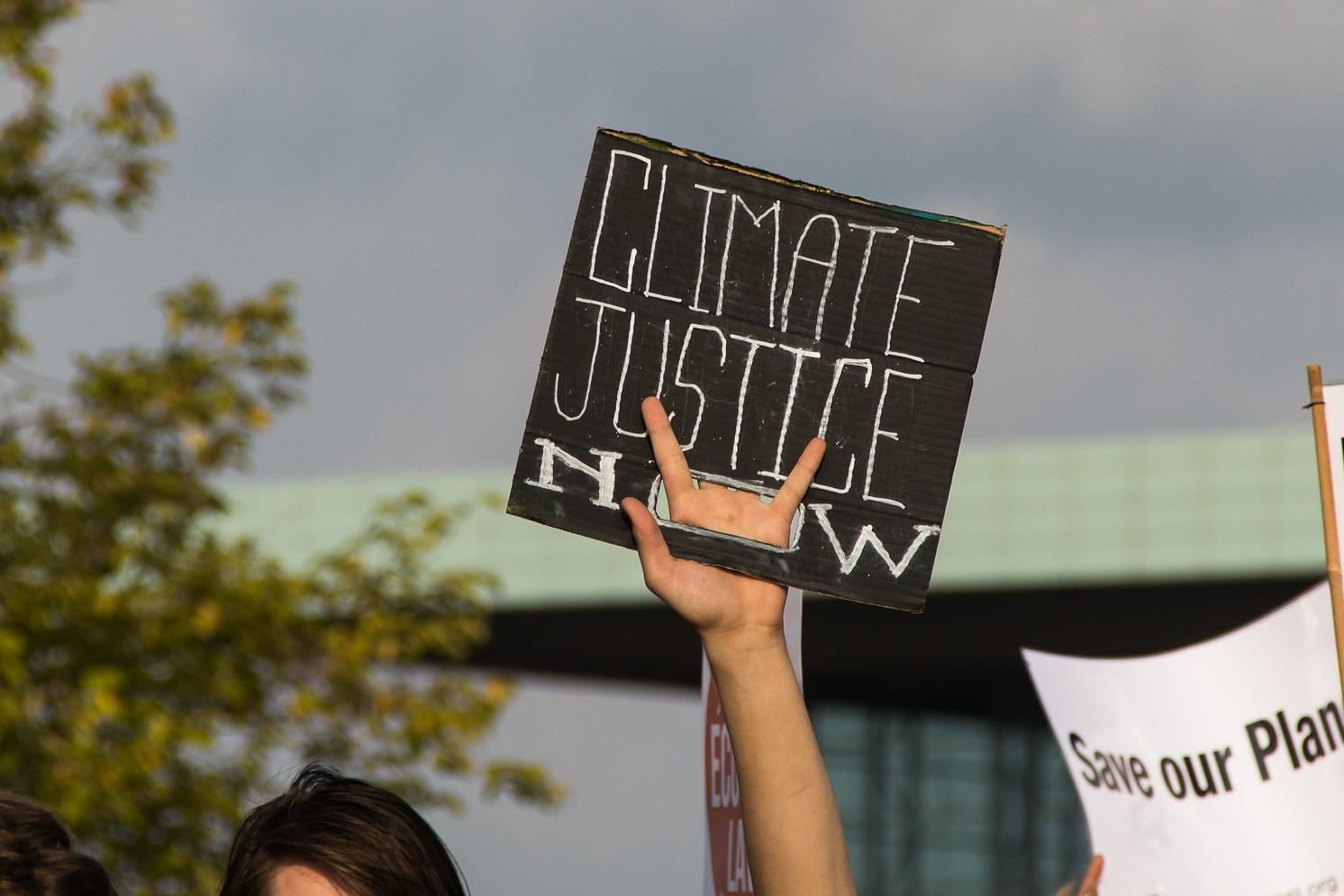
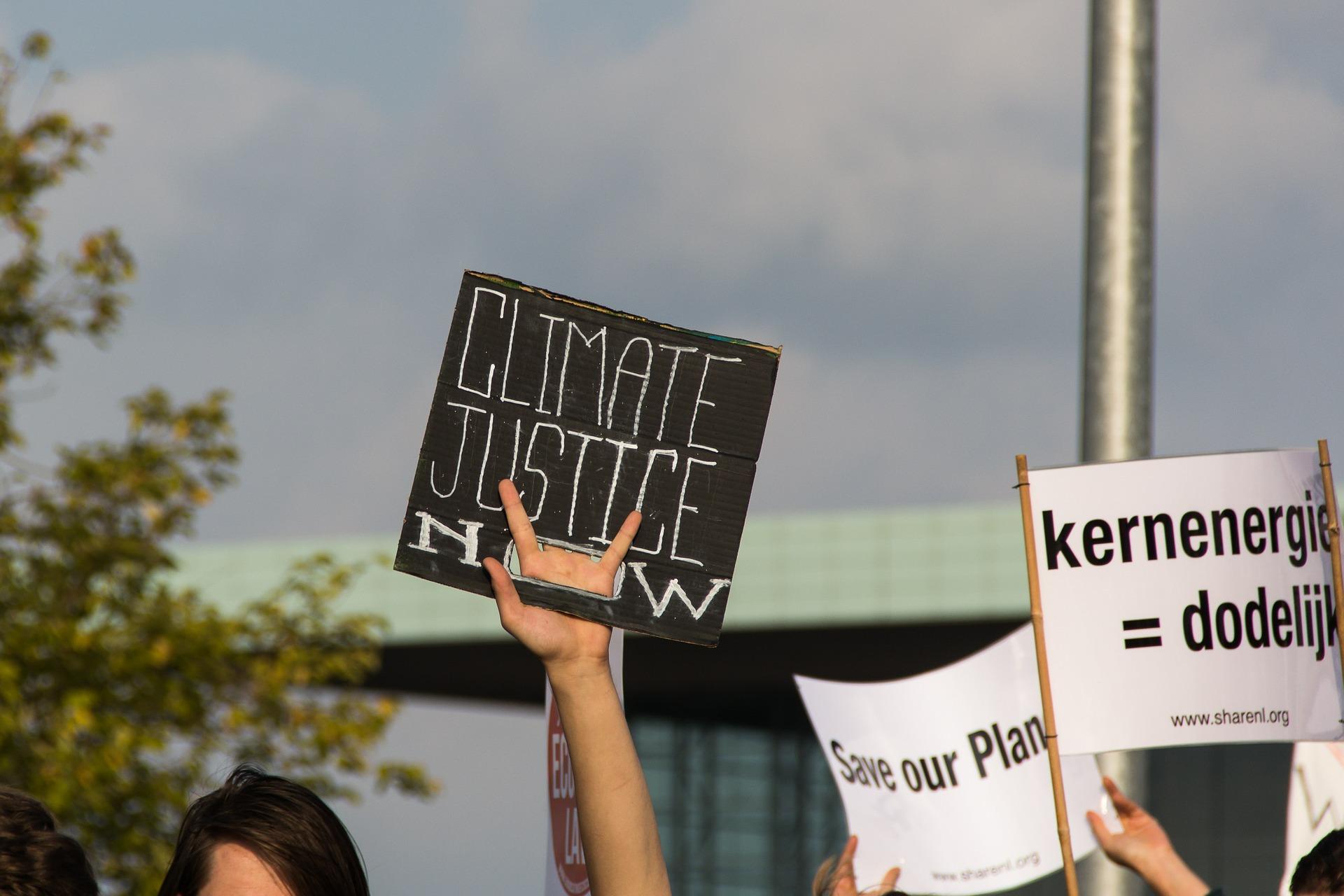
This article on resilience and race was written with Chauncia Willis.
“In the days ahead, we must not consider it unpatriotic to raise certain questions about our national character.” – Dr. Martin Luther King, Jr. in “Where do we go from Here: Chaos or Community?”
In early January, as our respective networks prepared to mix at a resilience reception to kick off 2021 and the resilience decade, we asked one another an obvious – but unanswered – question: Why is the climate resilience field so white?
It’s not a new question in the U.S. environmental movement. The headline in a January 2017 article in the January 2017 issue of Quartz proclaimed: “The overwhelming whiteness of U.S. environmentalism is hobbling the fight against climate change.” And, a Nov. 21, 2019 post in The Gender Policy Report headlined “Diversifying Leadership Is a Necessity for Climate and Energy.”
At our reception, comprised of mostly white resilience professionals, different voices provided various thoughts on the issue: Many in the American climate resilience field have arrived here via the environmental movement, which historically has been white and racist; the primary feeders to the climate resilience field – economics and the physical sciences – are overly represented by whites; and climate action and climate change mitigation are often paired with solutions such as renewable energy, electric cars and net zero homes, which often are unaffordable luxuries for low-income, marginalized, and vulnerable communities.
To continue the resilience decade and beyond, this group of professionals must agree that solutions start with racial equity, especially since communities of color are disproportionately subjected to the impacts of the climate crisis.
Here are five solutions offered by the resilience reception guests:
- Create climate resilience by fortifying social infrastructure – which starts with education, jobs, investment, housing, healthcare and personal security.
- Cede power to BIPOC leaders and make it a priority to use white power to unlock social equity solutions.
- Encourage privileged knowledge and learning beyond the academic setting.
- Within the education system, encourage BIPOC students to pursue STEM fields, provide them with mentors and paid internships, and demand that higher ed include academics of color in proportions that accurately reflect America.
- Do not pigeon-hole BIPOC leaders into “environmental justice” or “diversity” roles. Create social equity and include career pathways jobs with upward mobility, with or without advanced degrees.
While listening to civil rights leader and writer Alicia Garza keynote a Martin Luther King, Jr. tribute, I found that she put a fine point on our quest when she recalled a Dr. King quote in which he noted that Black Americans “hold only one key to the double lock of peaceful change. The other is in the hands of the white community.”
We can expect progress on this front from one recent change: President Biden’s environmental team. It includes North Carolina’s environmental chief Michael Regan, on course to become the first Black American to head the Environmental Protection Agency; environmental lawyer Brenda Mallory to lead the Council on Environmental Quality; New Mexico Rep. Deb Haaland to be the first Native American to lead the Interior Department; and Ali Zaidi, a former New York deputy secretary for energy and environment deputy, who happens to be Muslim, as national climate advisor.
We must remember, as Dr. King also maintained, “the ultimate measure is not where we stand in moments of comfort and convenience, but where we stand in times of challenge and controversy.” It’s important to be encouraged to approach resilience with the power of understanding that we each play a role in a resilient future, and that resilience exists at the intersection of climate, hazards, and vulnerability.
We cannot solely advocate for climate, hazards, and resilience and exclude factors that contribute to vulnerability as this works against all that we aspire to achieve in the resilient decade.
Co-author Chauncia Willis is the co-founder and CEO of the Institute for Diversity and Inclusion in Emergency Management and the former Emergency Management Coordinator for the City of Tampa
Image credit: Niek Verlaan/Pixabay
Why Is Corporate America Still on the Fence Over Failed Insurrection?
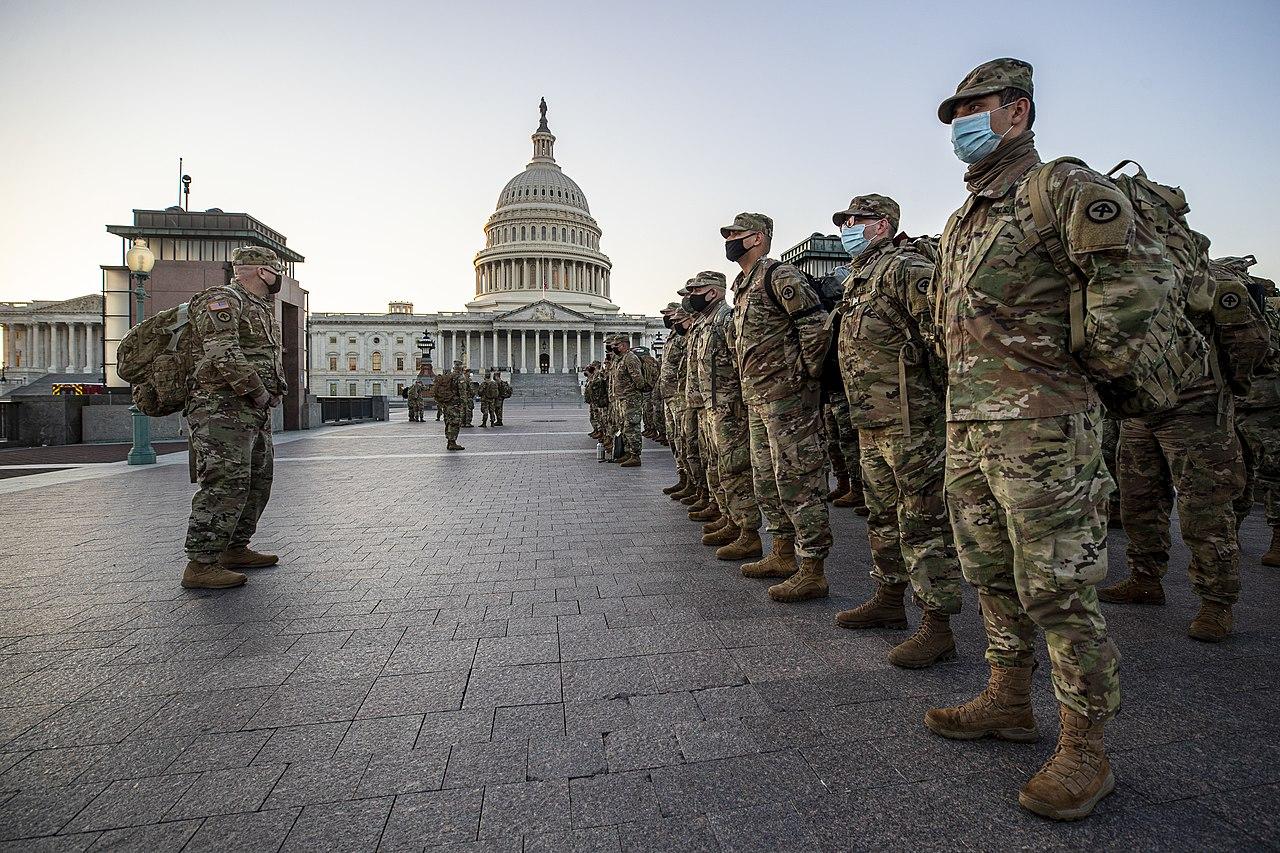
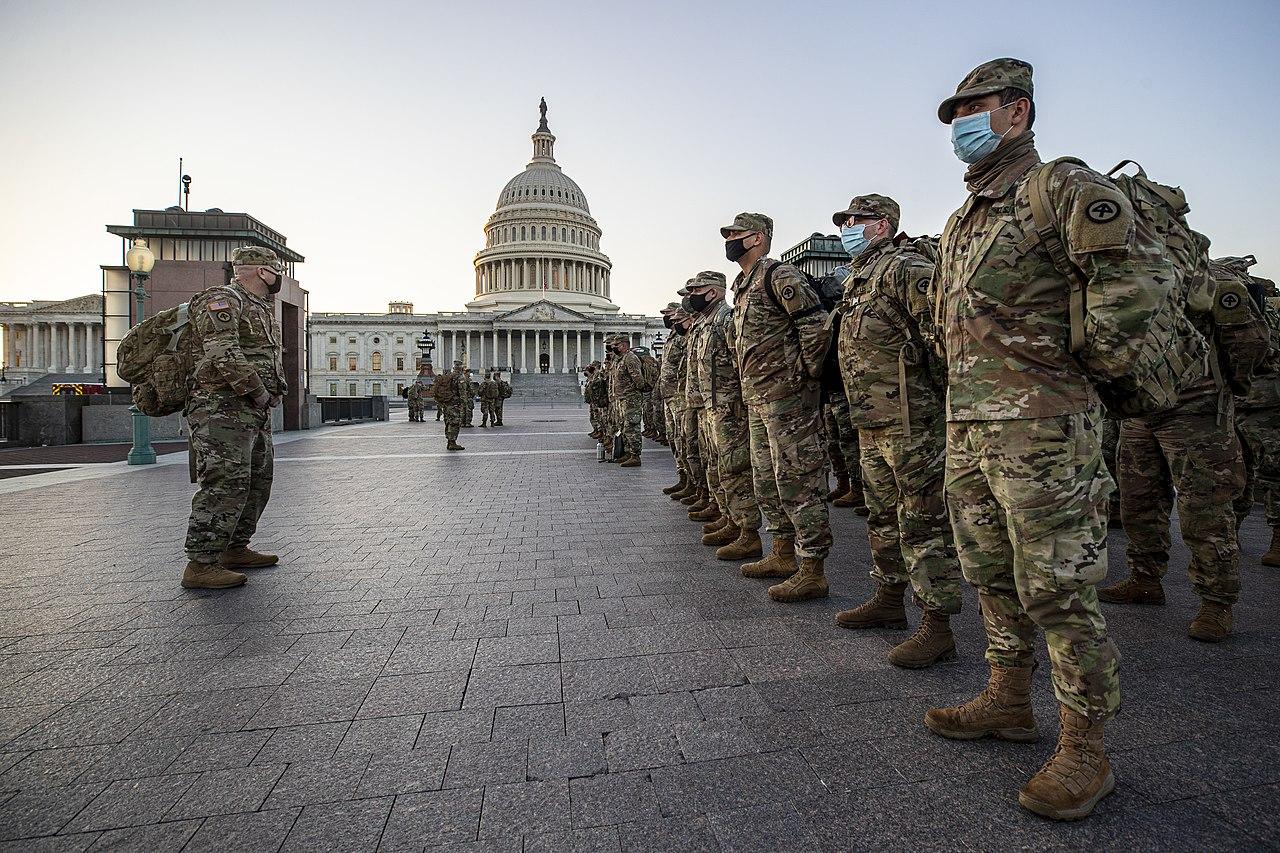
Republican Party leaders have been digging in their heels to defend members of Congress who reportedly aided and abetted the violent insurrection of January 6, as well they might. After all, the reputation of the entire Republican Party is at stake. Corporate leaders, however, are under no obligation to let anyone off the hook. After all, the whole corporate social responsibility movement is all about accountability, right?
Corporate leaders are beginning to hit white supremacy where it hurts
A growing number of corporate leaders have taken action against the insurrectionists. They have temporarily suspended, or in some cases permanently halted, donations to the 147 Republican members of Congress who objected to the Electoral College vote of January 6.
The Republican objectors are widely seen as supporting former President Donald Trump’s months-long effort to overthrow the results of the 2020 Election. Evidence is emerging that several of the objectors may have played a more active role in the invasion of the Capitol Building, as well.
The failed insurrection was an almost exclusively white effort, and it did not suddenly pop up on January 6. It spun out in the months leading up to and following Election Day, echoing the white supremacy movement courted by the former president. That provides responsible corporate citizens with yet another compelling reason to distance themselves from Republicans allied with former President Trump.
Respect for law enforcement officers is another corporate social responsibility angle in play. Some businesses have fired employees who were with the crowd that marched on the Capitol Building, whether or not they appeared to have had an active role in the violence that claimed the life of one police officer and injured more than 100 others.
In another indication that corporate America is distancing itself from the failed insurrection, reports have surfaced that Republican job seekers who have the Trump administration on their resumes are having a difficult time finding new employers.
Those reports appeared months before the insurrection, and the events of January 6 certainly have not helped former Trump appointees in the job market.
Where’s the accountability?
These actions have had some impact - but not nearly enough. Even as the House delivered an article of impeachment to the Senate on Monday evening, prominent Republican officials have turned up the heat on their members.
Earlier this week, The Hill reported that “allies of former President Trump are waging an intense pressure campaign aimed at convincing GOP senators to vote against his conviction in next month’s impeachment trial.”
The weapon of choice is simple: anyone who votes to convict will face a primary challenge in the next election cycle.
“The message is directed not only to red-state GOP senators who might be thinking of moving the party away from Trump, but to GOP leaders who might want to break with the president after a pro-Trump mob ransacked the Capitol on Jan. 6,” added The Hill.
Some Republican Party leaders are not even waiting around for the Senate to vote.
In Arizona, for example, Republican Party leaders reelected Trump supporter Kelli Ward while censuring Cindy McCain (widow of former Senator John McCain), former Senator Jeff Flake and Governor Doug Ducey for criticizing Trump.
The Associated Press observed that “they show the party’s foot soldiers are focused on enforcing loyalty to Trump, even in the wake of an election that saw Arizona inch away from its staunchly Republican roots.”
The AP also noted that Republican leaders have issued a challenge to the 10 Republicans who voted to impeach Trump in the House. The challenge sends “an implicit message of what will come to GOP senators who vote to convict.”
Even high-ranking Republicans in Congress are vulnerable. Wyoming representative Liz Cheney, for example, is the third-ranking Republican member of the House, due to her position as Chair of the House Republican Conference for the 116th Congress. Nevertheless, she faced a barrage of public criticism from high-profile Republicans after voting to impeach Trump.
In the wake of the insurrection, what took you so long?
Trump supporters may win the impeachment battle but lose the war, as suburban women and other key voting blocs abandon the Republican Party.
That’s all well and good, but the failure to enforce accountability after the insurrection has consequences for the entire nation, not just for one political party.
Observers of violent movements have said that an unpunished coup simply becomes a training exercise for the next coup. The U.S. has already had far too many such lessons in its long history of unpunished white violence perpetrated on people of color.
White supremacists finally breached the color line in 2016, when a group of armed thugs overran the Malheur federal wildlife refuge in Oregon and were permitted to occupy it for six weeks.
Still, the lesson wasn’t learned. Coddled and encouraged by Trump all throughout his term in office. white supremacists trained and organized for a more ambitious coup, one against the entire U.S. government - and they came within inches of succeeding.
That brings up the question of why it took so long for corporate America to remove Trump’s supporters in Congress from the money tree.
Victor Ray, an assistant professor of sociology and African-American studies at the University of Iowa, brought up that point earlier this week, in an article published by Harvard Business Review.
Ray noted that the same companies that supported the Black Lives Matter movement last summer also continued to support Trump’s allies in Congress at the same time.
“But through activities ranging from serving on advisory councils to donating to politicians (or political parties) who echoed Trump’s dog whistles, many businesses simultaneously supported a president who campaigned and governed on a platform of racial grievance,” Ray wrote. “This highlights the fundamental contradiction between these companies’ pursuit of profit and their commitment to racial justice: Many U.S. businesses showed they are willing to profit off of racial inequality - or even support policies that entrench racial inequality - until the political costs of doing so were judged to be too high.”
Next steps for corporate social responsibility and diversity hiring
The January 6 insurrection was a direct, existential challenge to the very concept of corporate social responsibility. Due to their role in supporting and promoting Trump and his allies in Congress over the years, U.S. business leaders now bear direct responsibility for the consequences.
That lesson may take some time to sink in, but in an interesting twist, Microsoft has inferred that diversity hiring may provide a path forward.
Like several other top firms, Microsoft suspended all of its PAC activity in the immediate aftermath of January 6. That may seem to be nothing more than a weak demonstration of “both-siderism” rather than an ethical judgement against Republicans in Congress.
However, last weekend Microsoft clarified that the PAC suspension may have been just a first step toward enforcing accountability.
Last weekend, the company publicized the transcript of a January 21 message from Microsoft President Brad Smith to employees in which he emphasized how the PAC system opens doors, regardless of party affiliation. Nevertheless, Smith also stated that the racist nature of the January 6 insurrection could not be ignored.
He began his address by acknowledging that that the attack on the Capitol had a deeper significance for non-white employees.
“I think it was even more difficult, say, for our Black and Jewish employees, given the hateful symbols that were on display. This has obvious implications for the future donations of the PAC,” he said.
Microsoft has stated that it will make a final decision on February 15, presumably after the Senate renders its verdict on Trump’s role in the insurrection.
Given Smith’s emphasis on diversity at Microsoft, it is difficult to see how the company - or any other corporate leader - could continue to support Republicans who foster and validate white violence.
Image credit: The National Guard/Wiki Commons
Companies Lagging on Racial Justice Could Find Themselves Canceled
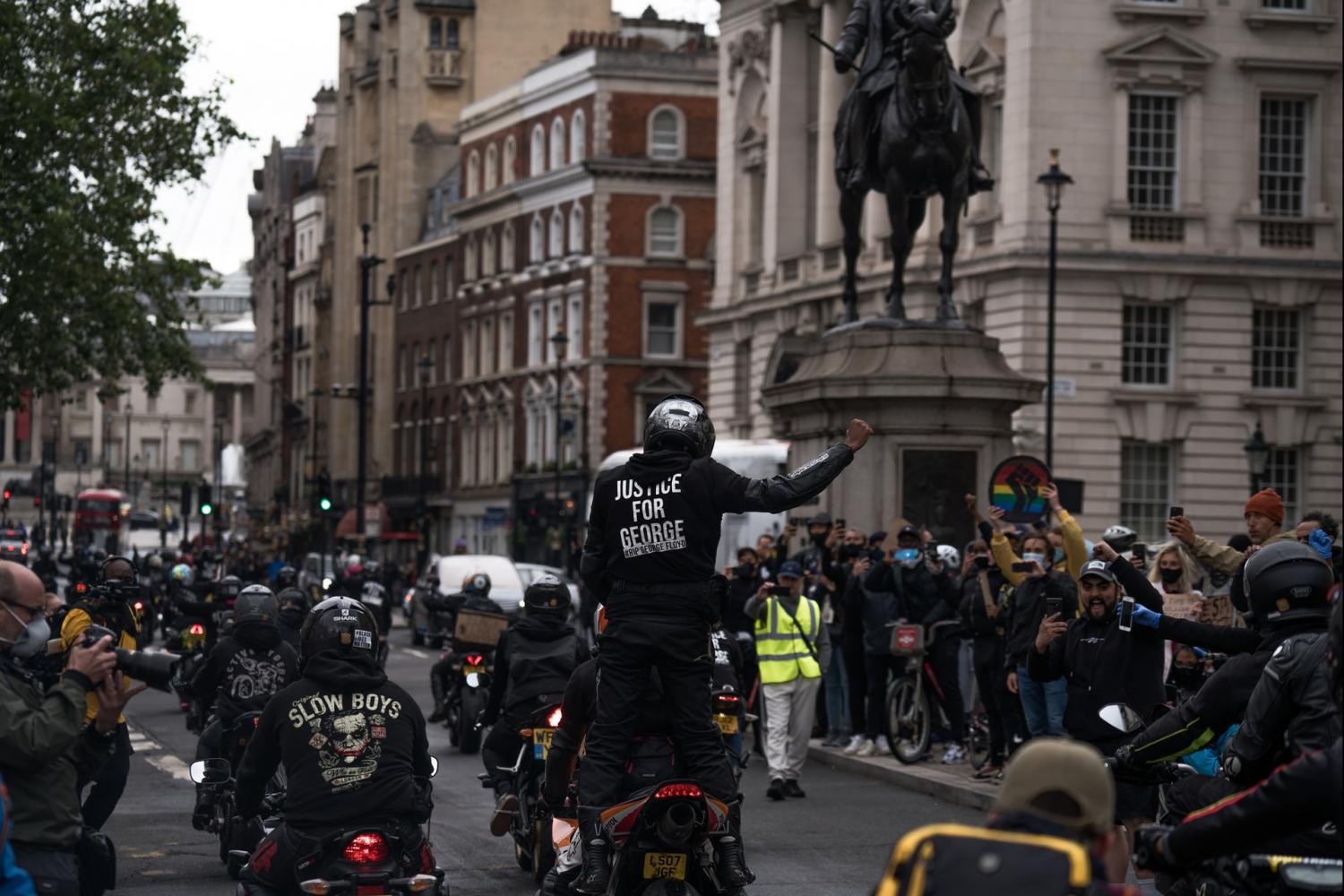

Among the laundry list of topics covered during this week’s virtual Davos Agenda is the role business can have in ensuring racial justice worldwide. The events of the past several weeks show that society is still far from a true reckoning on race — and whatever one may think about the folks who usually fly into Davos for the World Economic Forum annual meeting this time of year, it's clear business has a role to play in creating a more level playing field.
True, the U.S. Capitol riots served to shine more ugly light on the reality of racial injustice here in the U.S., but race relations are a thorny challenge across the pond as well. To that end, the World Economic Forum (WEF) launched an initiative that aims to push companies and their leaders to make an effort both individually and collectively to ensure workplaces that are fair, welcoming, and actually hire professionals with historically underrepresented racial and ethnic backgrounds.
A plan to address racial justice
According to the WEF, such an approach requires a focus on three areas. First, fair and equitable opportunities must be available in the first place. Next, companies need to look outward and they must ensure this inclusive mindset applies to its products, customers and supply chain.
Finally, businesses, along with their leaders and employees, have got to engage with their local communities — and pursue public advocacy, not shy away from it. Bottom line: If a company’s employees can coalesce and pressure a state or local government to pass laws that curtail any form of discrimination, that’s a positive for both business and society.
WEF notes that such programs need to be “hardwired” into a company’s processes and culture — not be treated as temporary public relations talking points. For example, a beverage company that collected demographic data on hiring decisions while embarking on a diversity plan saw the percentage of its Black executives increase tenfold during a 12-year period. But once that same company ended its public disclosure of such data, the percentage of Black executives within its ranks began to decline.
Public statements aren’t enough to achieve an equitable society
Further, despite the billions of dollars corporations have funneled into racial justice initiatives since last summer, deeds still haven’t met words or financial largess. Critics have noted that some of these companies still send financial contributions to politicians who have demonized the Black Lives Matter movement. Meanwhile, many corporations have still made little progress on the inclusion front. The public statements and gestures may have been bold, but WEF notes:
“Companies have been repeatedly reckoning with the gap between intentions and progress. There have only been 15 Black CEOs over the course of the 62 years of the Fortune 500’s existence, and currently, only 1 percent of Fortune 500 CEOs are Black. There are no Black female CEOs of the Fortune 500 and only three women of color.”
Cancel culture is ongoing for a reason
Another risk for companies is that, as they keep proclaiming their diversity chops publicly on such forums as social media, there is the chance their reputations will take a hit if they aren't walking the walk. For better or worse, social media can fan the flames of so-called “cancel culture.” While it may seem unfair that one off-putting comment should plunge any organization in hot water, the evidence also suggests many of these episodes were not “random flukes,” but in fact, “smoldering problems” that could have been prevented if management had been more proactive and intentional about diversity, inclusion and racial justice.
On that point, new Porter Novelli research that examined cancel culture across the U.S. business landscape proves that consumers have found their voices through social media and won’t give them up any time soon. Of all the factors that would push American consumers to cancel a brand, the largest offense a company could commit would be when addressing racial issues — narrowly edging out women’s rights and COVID-19 protocols.
The good news for companies? Consumers see their cancel culture voices as a tool to keep businesses accountable for their actions, engage them in dialogue and improve their performance on social issues for the long term. Forgiveness is possible, depending on how a company seeks to earn it.
But here’s the bad news: 37 percent of surveyed consumers indicated that an offensive incident would push them away from a brand for at least a year or they’d never support that company again.
Some companies that found themselves in the midst of social media firestorms, such as Oreo cookies or L'Oréal, were by and large able to weather those storms. Others, including Wells Fargo and Goya, are still struggling to change their perceptions for the better.
The lesson here for brands is that if you don’t want to be in the crosshairs of the racial justice debate, it behooves your organization to enact measurable, transparent and lasting change now. Relying on boilerplate language in your press releases and on your website may give an appearance that your company may look like 2021 America, but under scrutiny, it can't mask the reality that your company culture is more reflective of what this nation was like back in 1950.
Image credit: James Eades/Unsplash